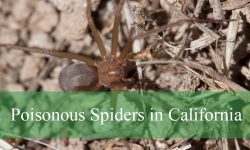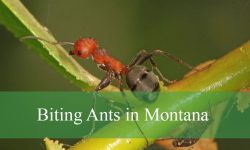Arizona’s warm climate provides the perfect environment for several cockroach species to thrive year-round. These resilient insects can survive in extreme heat, finding shelter in sewers, basements, and even inside buildings during dry spells.
While most roaches prefer to live outdoors, many species in Arizona are known to invade indoor spaces in search of food and moisture. Their presence can be alarming, as they multiply quickly and spread bacteria through contaminated surfaces.
Understanding the appearance, behavior, and habitats of each species is the key to effective identification and control. This guide explores eight common types of roaches in Arizona, complete with pictures and details on how to recognize and manage them.
Most Common Types of Roaches in Arizona
American Cockroach (Periplaneta americana)
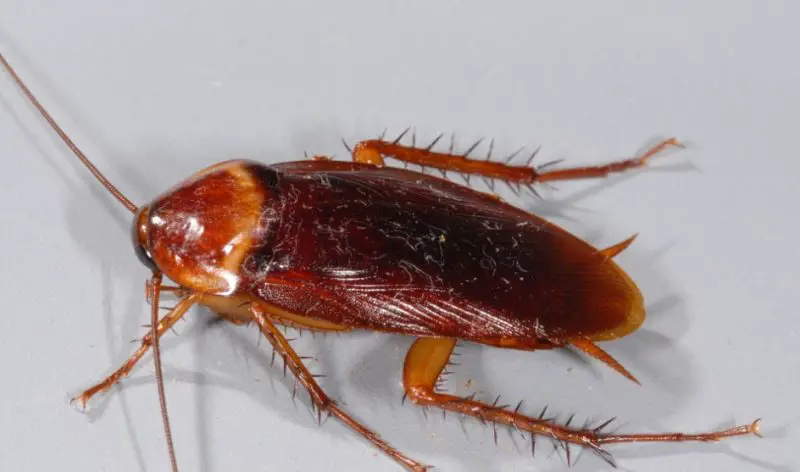
The American cockroach is one of the largest roach species found in Arizona, often growing up to 1.5 to 2 inches long. Its reddish-brown body is easily recognized by the yellowish figure-eight pattern located just behind the head. This glossy sheen and long wings make it one of the most distinguishable roaches in the state. Both males and females are capable of gliding short distances, although they rarely fly indoors.
In Arizona, American cockroaches prefer warm, humid habitats such as sewers, storm drains, and basements. During periods of extreme heat or drought, they may venture indoors in search of moisture, especially into kitchens, bathrooms, or laundry areas. They’re highly adaptable and can survive in a wide range of urban environments.
Their diet includes almost anything organic — from crumbs and grease to decaying matter. This omnivorous feeding behavior allows them to thrive even in unsanitary conditions. They’re most active at night, often scurrying away quickly when lights are turned on.
While American cockroaches are not directly dangerous, they pose a health risk by contaminating food and surfaces with bacteria such as Salmonella and E. coli. Their shed skins and droppings can also contribute to allergic reactions and asthma in sensitive individuals.
German Cockroach (Blattella germanica)
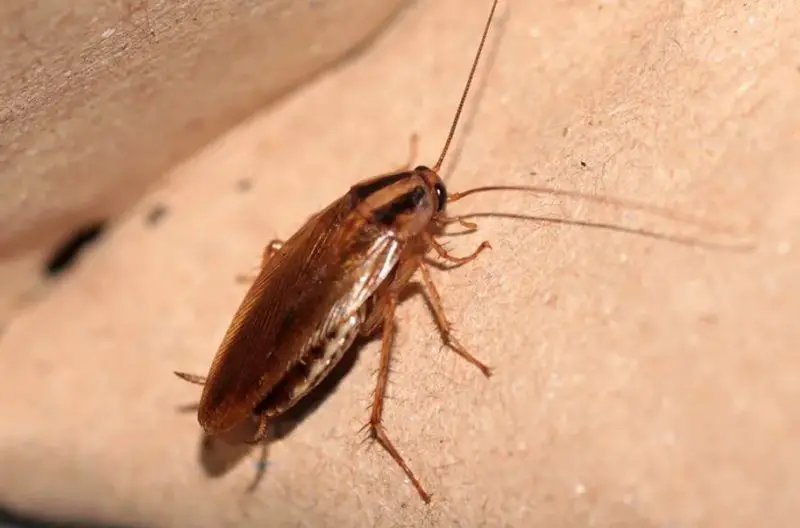
The German cockroach is the most troublesome species for Arizona homeowners and businesses. Smaller than most others, this roach measures about ½ inch long and has a tan to light brown color with two distinctive dark stripes running down its pronotum. Because of their small size and rapid movement, they can easily hide in tiny cracks and crevices near food sources.
German cockroaches thrive in kitchens, bathrooms, and restaurants, where warmth and humidity are constant. They prefer to stay close to food, water, and shelter — often behind appliances, in cabinets, and under sinks. They’re known for their rapid breeding cycle: a single female can produce hundreds of offspring in a year, making infestations difficult to control once established.
Their diet consists of food crumbs, grease, soap residue, and even toothpaste. They are nocturnal and usually scatter when disturbed by light. In Arizona’s hot climate, they depend heavily on indoor environments since they cannot survive long outdoors.
Beyond being a nuisance, German cockroaches are vectors for pathogens and allergens. Their droppings and shed skins can trigger asthma attacks, especially in children and elderly individuals. For this reason, prompt and thorough pest management is essential once they’re detected indoors.
Turkestan Cockroach (Blatta lateralis)
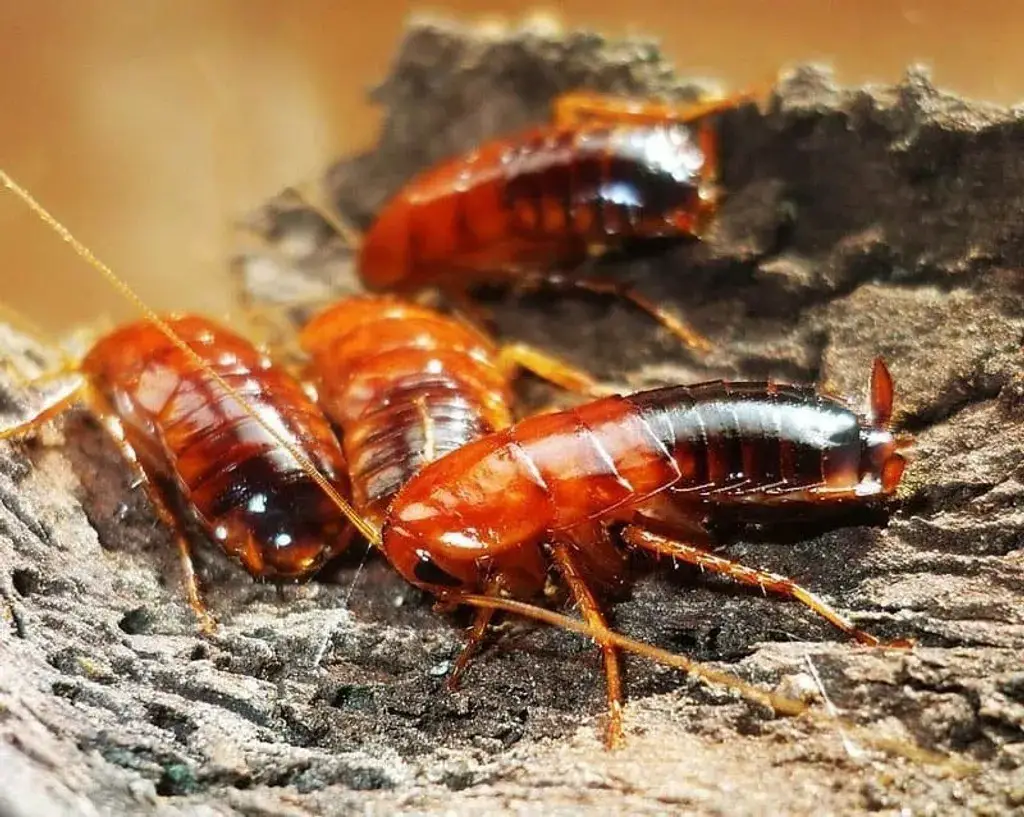
The Turkestan cockroach, sometimes referred to as the red runner roach, is a relatively new but rapidly spreading species in Arizona. Adult females are dark brown with short, rounded wings, while males are lighter in color with long, yellow-tinted wings that allow them to glide or fly. Males are often mistaken for other species because of their active flight patterns around lights at night.
Originally from Central Asia, this species has adapted well to Arizona’s arid climate. It is now widespread in Phoenix, Tucson, and other desert cities. Turkestan roaches are primarily outdoor dwellers, preferring compost piles, leaf litter, irrigation systems, and cracks around foundations. They’re especially common around exterior lighting, where males gather in large numbers after sunset.
They reproduce quickly and can outcompete native species due to their adaptability. Males occasionally enter homes through doors, vents, or cracks, drawn by light and moisture. Females typically remain outdoors, laying egg cases in protected areas near soil or debris.
Although they rarely infest indoor areas permanently, large outdoor populations can become a nuisance. Their presence around entryways and patios can lead to frequent household sightings, particularly during warm summer nights.
Oriental Cockroach (Blatta orientalis)
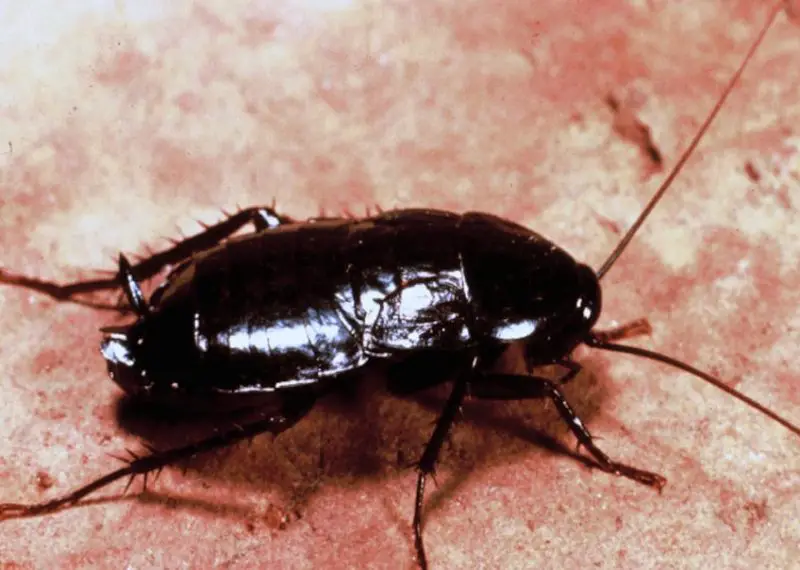
The Oriental cockroach, often nicknamed the “water bug,” is one of the darker and heavier-bodied roach species found in Arizona. Adults are shiny dark brown to nearly black, with a smooth, oily-looking exoskeleton. Females are about 1 inch long with short wings, while males are slightly smaller and have longer wings that cover most of the abdomen but do not support flight.
This species favors cool, damp, and dark environments, making basements, crawl spaces, and drains ideal habitats. In Arizona, they’re most active during spring and early summer when moisture levels are higher. Outdoors, they can be found in shaded areas under mulch, stones, and leaf litter, emerging at night to forage.
Oriental cockroaches feed primarily on decaying organic matter, garbage, and sewage materials. Their sluggish movement and preference for unsanitary places make them one of the more unpleasant species to encounter. They are less likely than others to infest indoor living areas but can enter homes through gaps in foundations or plumbing.
Their presence often indicates excess moisture or poor sanitation. Oriental cockroaches can spread harmful bacteria on surfaces as they move between drains and kitchens. Regular cleaning, dehumidification, and sealing entry points are crucial steps for keeping them out of Arizona homes.
Brown-Banded Cockroach (Supella longipalpa)
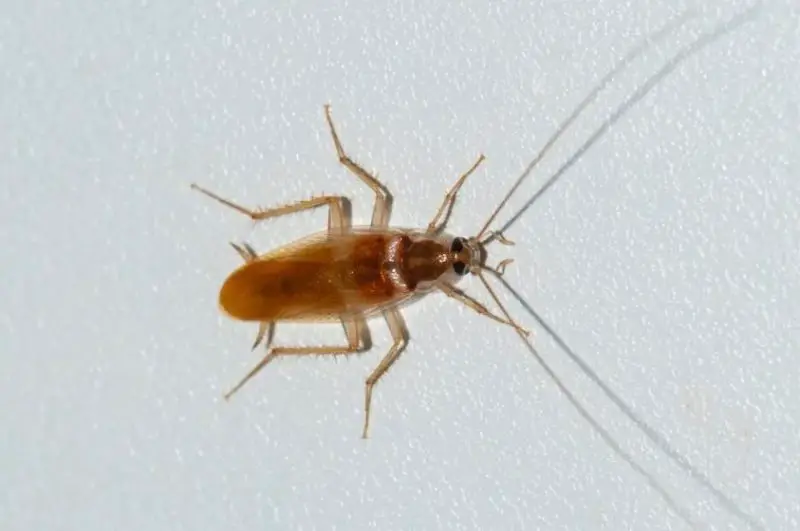
The brown-banded cockroach is a smaller, less common indoor pest in Arizona, but it can still become a troublesome invader in homes and offices. Measuring around ½ inch in length, this species is tan to light brown and easily recognized by the two lighter, horizontal bands across its wings and abdomen. Males have fully developed wings and can fly, while females have shorter wings and are slightly broader in body shape.
Unlike many other cockroach species, the brown-banded cockroach prefers warm, dry environments rather than moist areas. It tends to inhabit upper portions of rooms, often hiding behind picture frames, inside furniture, clocks, or within electrical appliances where warmth is constant. This tendency to spread throughout a home — not just in kitchens or bathrooms — makes detection and control particularly challenging.
Their diet includes starchy materials such as book bindings, wallpaper glue, and crumbs, as well as organic debris. Because they can feed on such varied materials, they survive even in areas with limited food sources. Infestations are often scattered rather than centralized, which complicates eradication efforts.
Although they’re not aggressive or directly harmful, brown-banded cockroaches can contaminate food and surfaces with bacteria and produce allergens that affect sensitive individuals. Effective control involves locating hidden egg cases, reducing clutter, sealing crevices, and applying targeted insecticidal treatments in warm, elevated areas where they commonly hide.
Smokybrown Cockroach (Periplaneta fuliginosa)
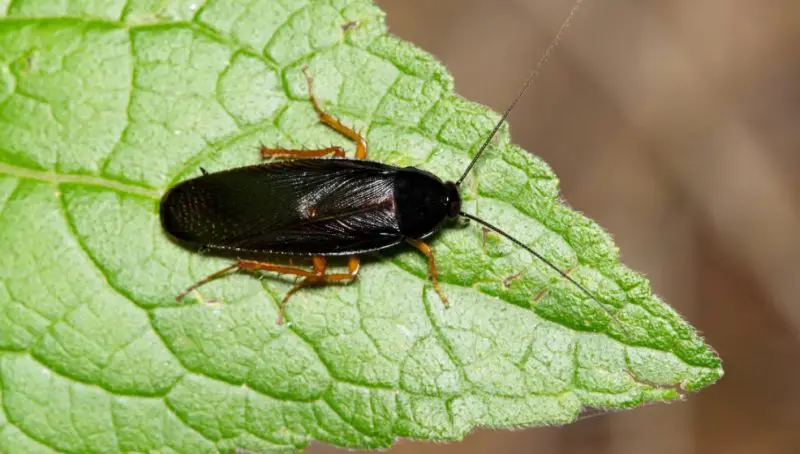
The smokybrown cockroach is a large, glossy brown species often mistaken for the American cockroach but with a darker, more uniform coloration. Adults measure around 1.25 to 1.5 inches long, with long wings that extend past the tip of the abdomen. Both males and females are capable fliers and are strongly attracted to lights at night, which often draws them toward residential areas.
In Arizona, smokybrown cockroaches are typically outdoor inhabitants, found in trees, gutters, mulch beds, and around roofs or attics. They prefer warm, humid conditions and are especially abundant in irrigated neighborhoods where moisture supports their survival. Unlike the American roach, they are less tolerant of arid conditions, making them more common in well-watered landscapes or shaded yards.
Their diet includes decaying plant matter, pet food, and organic debris. They are nocturnal and can be seen flying toward porch lights or crawling into attics through vents or eaves. Once indoors, they may seek refuge in high, warm locations such as attics or ceiling voids.
Smokybrown cockroaches are considered nuisance pests rather than major health threats, but they can still spread bacteria and trigger allergies. Keeping gutters clean, trimming vegetation, and sealing exterior gaps are effective ways to reduce their presence around Arizona homes.
Field Cockroach (Blattella vaga)
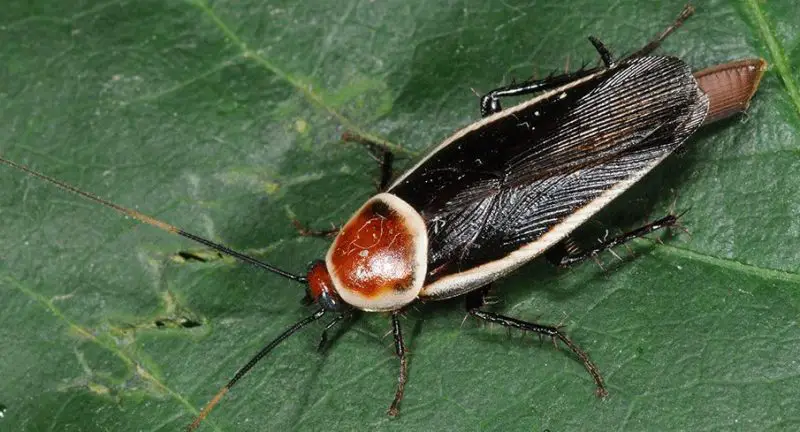
The field cockroach is one of the most widespread outdoor species in Arizona, easily recognized by its small size (around ½ inch long) and light brown color with a dark stripe running between the eyes. This species is closely related to the German cockroach but behaves very differently — it thrives outdoors and rarely establishes permanent indoor infestations.
Native to the arid Southwest, field cockroaches are well adapted to Arizona’s desert conditions. They prefer to live in gardens, lawns, and areas with leaf litter, feeding primarily on decomposing plant material. During hot, dry spells, they may wander indoors through open windows, door gaps, or foundation cracks in search of cooler, more humid air.
Field cockroaches are active during dusk and early evening, often seen scurrying around outdoor lights or patios. Because they reproduce and live mostly outside, infestations indoors are temporary and usually resolve once moisture or temperature conditions normalize.
While they can be a nuisance, field cockroaches pose little health risk compared to other household species. Keeping outdoor areas tidy, maintaining irrigation control, and sealing entry points around doors and windows can prevent them from entering Arizona homes.
Surinam Cockroach (Pycnoscelus surinamensis)
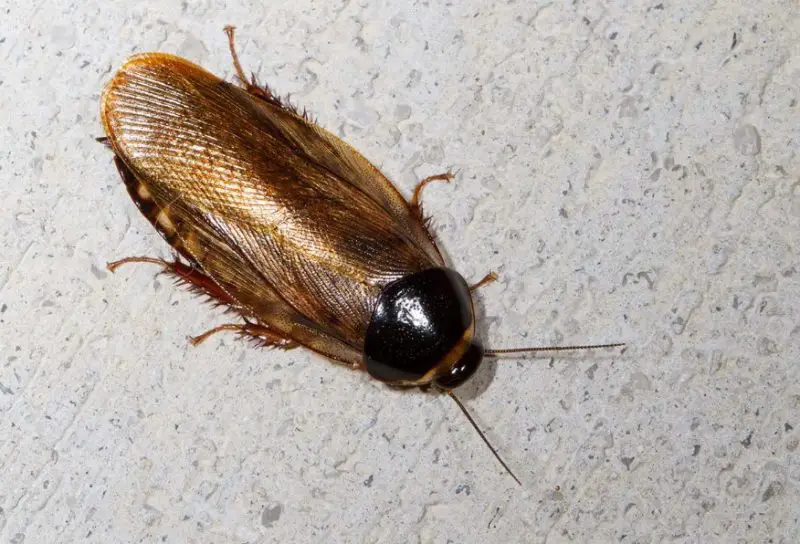
The Surinam cockroach is a unique species occasionally found in Arizona’s greenhouses, garden centers, and tropical landscaping. Adults are about 1 inch long, dark brown, and shiny, with a rounded body and short wings that cover most of the abdomen. Unlike many roaches, they are burrowers, spending most of their time in soil or mulch rather than crawling on walls or surfaces.
These cockroaches prefer moist environments and are most common in potted plants, compost piles, and greenhouses where humidity is high. They feed on decaying plant material, roots, and organic debris, making them a concern for gardeners who notice them in flower beds or around irrigation lines. In cooler regions of Arizona, they typically survive indoors or in heated greenhouse environments.
One of the most fascinating features of the Surinam cockroach is that all known individuals are female. They reproduce by parthenogenesis, meaning they do not need males to produce offspring. This allows populations to grow quickly in favorable conditions, leading to persistent infestations in moist soils.
While not a major structural pest, the Surinam cockroach can become a recurring nuisance in greenhouses or indoor plant areas. Maintaining proper soil drainage, avoiding overwatering, and removing decaying organic matter are effective ways to control their populations in Arizona’s plant-rich environments.
Tips to Prevent and Control Roaches in Arizona
Keep Your Home Dry and Well-Ventilated
Roaches are strongly attracted to moisture, especially in Arizona’s hot and dry climate where water is limited. Fix leaking faucets, pipes, or air conditioning units as soon as possible. Use dehumidifiers in damp areas like basements or bathrooms, and make sure your kitchen and laundry areas are well-ventilated. Keeping your home dry significantly reduces their hiding and breeding sites.
Seal Entry Points and Cracks
Many Arizona roach species, such as the Turkestan and American cockroach, enter homes through small openings. Inspect your property for cracks around doors, windows, vents, and foundations. Seal gaps with caulk or weatherstripping and install fine mesh screens over drains and vents. Regular maintenance of exterior walls and utility openings helps block their access routes.
Practice Good Sanitation
Food and grease residues attract roaches quickly. Keep counters, stoves, and sinks clean after use. Store food in airtight containers and take out garbage daily. Clean under appliances and inside cabinets, where crumbs and spills often accumulate unnoticed. Pet food should also be stored securely and not left out overnight.
Manage Outdoor Conditions
Since many Arizona cockroach species thrive outdoors, maintaining your yard is essential. Trim bushes and trees near the house, clean gutters, and remove leaf litter or mulch close to the foundation. Reduce outdoor lighting or switch to yellow “bug lights,” which are less attractive to flying roaches like the Turkestan and smokybrown species.
Use Baits and Insect Growth Regulators (IGRs)
For persistent infestations, bait stations and insect growth regulators can be highly effective. Baits attract roaches to consume poison and bring it back to their nests, gradually eliminating colonies. IGRs prevent young roaches from maturing, stopping reproduction cycles. Place baits strategically near appliances, drains, and dark corners for best results.
FAQs About Roaches in Arizona
What attracts roaches to Arizona homes?
Roaches are attracted to moisture, warmth, and food. Even though Arizona’s desert climate is dry, homes provide ideal microhabitats with water sources from plumbing, condensation, and stored food. Kitchens, bathrooms, and laundry rooms are common areas where they settle.
Are cockroaches in Arizona dangerous?
While most roaches in Arizona don’t bite or sting, they can spread bacteria, allergens, and parasites through their droppings and shed skins. Contact with contaminated surfaces or food can cause gastrointestinal illnesses. Some species, like the German cockroach, are known to trigger asthma and allergic reactions in sensitive individuals.
Why are roaches more active during summer in Arizona?
Arizona’s hot summers create ideal breeding conditions for cockroaches, especially outdoor species like the Turkestan and smokybrown roaches. They become more active at night when temperatures drop and often invade homes seeking cooler, humid environments.
Can roaches fly in Arizona?
Yes, some species such as the American, Turkestan, and smokybrown cockroaches are capable fliers. They’re often attracted to outdoor lights and may accidentally enter homes through open doors or windows. However, other common species like the German and Oriental cockroaches rarely fly.
How can I tell which type of roach I have?
Identification depends on color, size, and location. Large reddish-brown roaches (around 2 inches) are likely American cockroaches, while small tan ones with dark stripes are German roaches. Outdoor species like the Turkestan cockroach often have light-colored males and darker females. Accurate identification helps choose the best control method.
What’s the best way to get rid of roaches permanently?
Long-term control requires an integrated approach: eliminate food and moisture sources, seal entry points, clean regularly, and use professional pest treatments if needed. For severe infestations, professional exterminators can apply targeted insecticides and monitor for recurring activity.
Do roaches die off in Arizona winters?
Most roach species in Arizona survive the winter by moving indoors or finding warm shelters underground. Because Arizona winters are mild, especially in southern regions, roach populations persist year-round, though activity may slow slightly during cooler months.
Are roaches a problem even in clean homes?
Yes. Even well-maintained homes can attract roaches if they provide warmth, shelter, or minor food sources. Crumbs, pet dishes, and moisture under sinks are enough to sustain small populations. That’s why prevention—through sealing, cleaning, and monitoring—is crucial in Arizona’s roach-prone environment.


